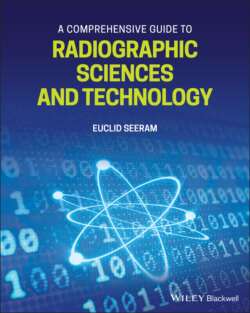Читать книгу A Comprehensive Guide to Radiographic Sciences and Technology - Euclid Seeram - Страница 28
Radiation protection regulations
ОглавлениеRadiation protection regulations and guidelines address equipment specifications, procedures for minimizing the dose to patients and personnel, and shielding, outlined in various reports, and are issued by major agencies in respective countries. In the United States (US), for example, while the NCRP deals with medical x‐ray, electron beam, and gamma ray protection for energies up to 50 MeV in NCRP Report No. 102: Equipment Design and Use; the Code of Federal Regulations (CFR) Title 21 (US Department of Health and Human Services, Food and Drug Administration [FDA]) deals with the Performance Standards for Ionizing Radiation Emitting Products.
Equipment specifications for radiography, fluoroscopy, and CT are intended for manufacturers. Specifications for radiographic equipment relate to the x‐ray control panel, leakage radiation from the x‐ray tube, filtration, collimation, SID, source‐to‐skin distance, and the exposure switch for fixed and mobile radiographic systems. An example of one such recommendation for the exposure switch is that for fixed radiographic equipment, the exposure switch must be on the control panel to ensure that the operator remains in the control booth during the exposure. Furthermore, the switch must be a “dead man” switch; that is, pressure must be applied to the switch for the exposure to occur.
For fluoroscopy, these specifications include specifications for filtration, collimation, source‐to‐skin distance, exposure switch, cumulative timer, protective curtain, table and Bucky‐slot shielding, and accessory protective clothing. The recommendation for protective aprons worn during fluoroscopy is that they shall have at least a 0.5 mm lead equivalent.
Guidelines and regulations also focus on practices and procedures for reducing the dose to patients and personnel and to keep exposures according to the ALARA philosophy. Technologists must refer to the safety codes of their respective countries for more detailed information. Two such examples of these guidelines on radiography and fluoroscopy state that selection and use of the best possible exposure technique factors should keep the dose ALARA without compromising image quality. Additionally, high‐kVp techniques reduce the dose to the patient.
Procedural factors for minimizing dose to personnel are wide and varied and technologists must work within the ALARA philosophy to accomplish this task. Two such examples of recommendations to ensure personnel dose reduction are that (i) only essential personnel must be present in an x‐ray room during the exposure and (ii) technologists must remain in the control booth during radiographic exposures and must wear protective aprons when the situation makes this impossible. Another significant recommendation relates to shielding, a radiation protection action and design criterion that is intended to protect patients, personnel, and members of the public. Shielding includes specific area shielding (protecting radiosensitive organs) and protective barriers (walls) positioned between the source of radiation and the individual. This type of shielding, for example, is specifically intended to protect personnel and members of the public from unnecessary radiation.
